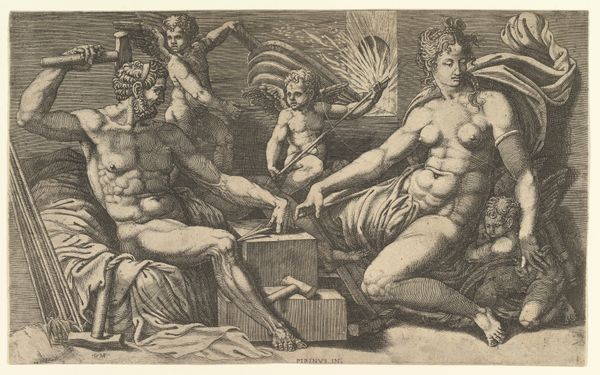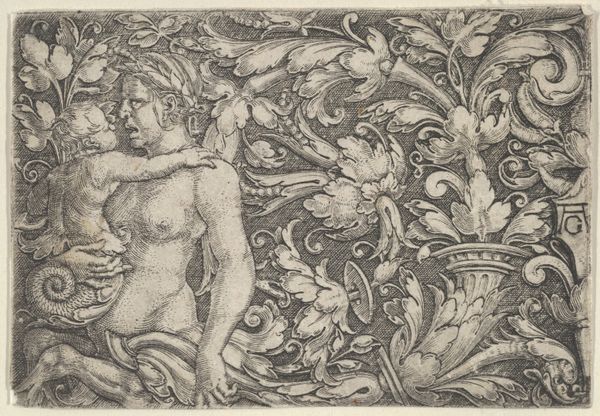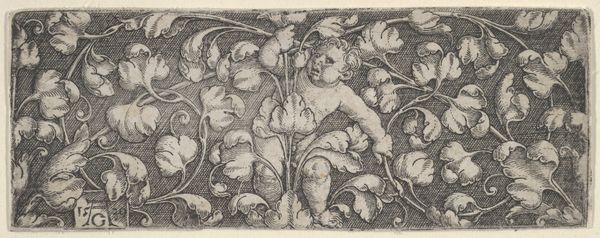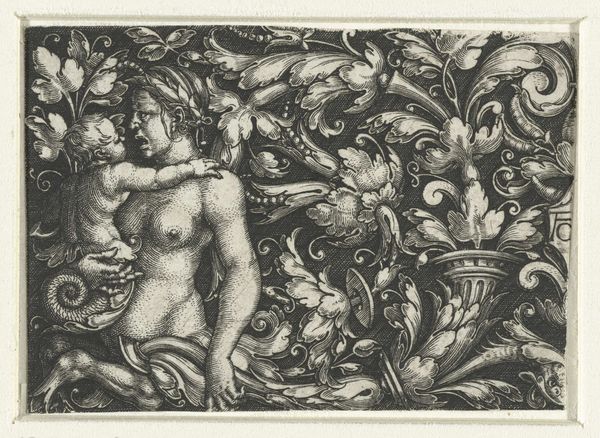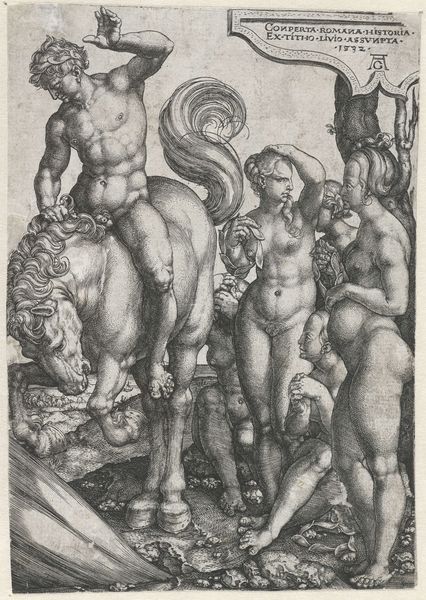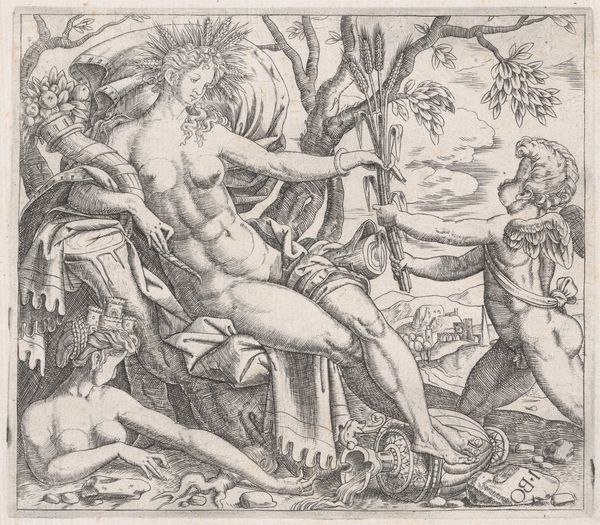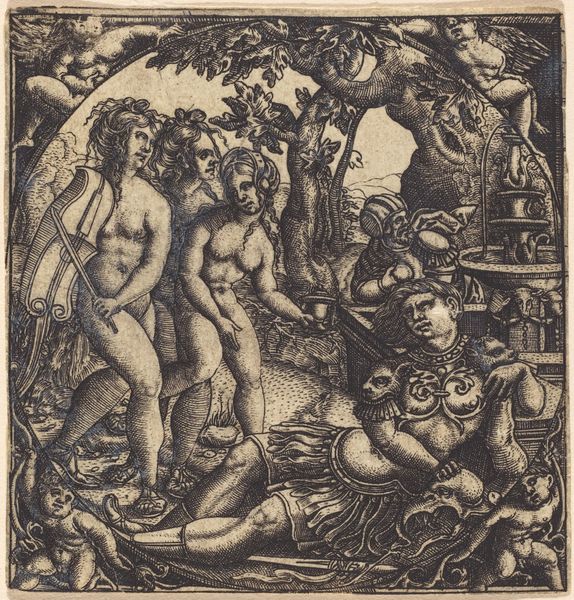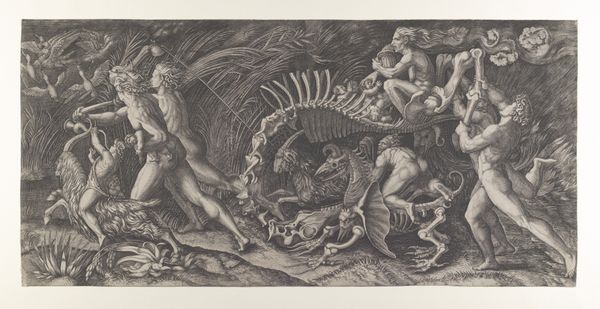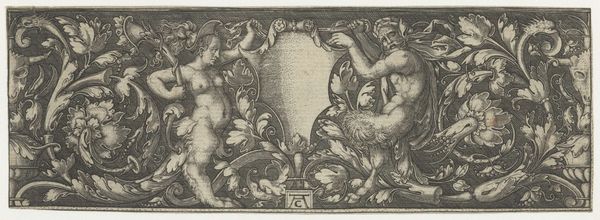
print, ink, engraving
#
allegory
# print
#
figuration
#
11_renaissance
#
ink
#
line
#
northern-renaissance
#
decorative-art
#
engraving
Dimensions: 1 13/16 × 6 in. (4.6 × 15.24 cm) (sheet)
Copyright: Public Domain
Heinrich Aldegrever created this ornamental design with tendrils sometime between 1520 and 1561 using engraving. Aldegrever was a German painter and printmaker, associated with the Protestant Reformation. His religious beliefs were reflected in the choice of his subjects. As an artist working during the Reformation, Aldegrever found himself in a society undergoing immense religious and social change. He was also one of the most important German designers of ornament. The figures in this print are not explicitly religious. The cherubic figures are surrounded by dense foliage, and evoke classical antiquity. Allegorical figures were often used as a way to circumvent the restrictions or expectations of religious art. How might we consider the role of ornament during times of religious reform? As a space for artists to explore humanism, or as a form of covert expression, it could give voice to alternative or even subversive narratives.
Comments
minneapolisinstituteofart almost 2 years ago
⋮
Heinrich Aldegrever showed his reverence for Albrecht Dürer by imitating his monogram style. He also used the great German artist’s prints as his personal model book. The half-fish triton at left has the same pouty face as Diana in Dürer’s Apollo and Diana (c. 1505), and the long-waisted bodies are typical of Dürer, too. This panel was probably intended to inspire furniture decoration.
Join the conversation
Join millions of artists and users on Artera today and experience the ultimate creative platform.

